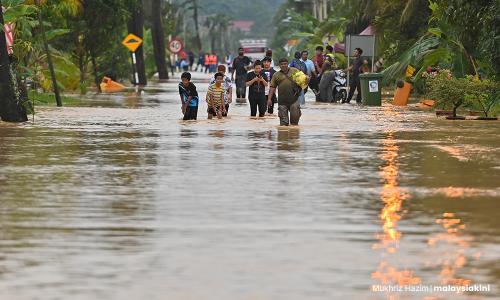LETTER | The govt's role in preventing upcoming floods
LETTER | Among the 33 million people in our country, there will be more than 10 million people, especially those on the east coast, who are expected to be affected by floods during the rainy season from November this year to early next year.
According to the Malaysian Meteorological Department, several states on the east coast will experience heavy rainfall, affecting some residents.
Among them, Kelantan, which will be affected, has a population of 1.8 million, Terengganu with a population of 1.2 million, and Pahang with a population of 1.6 million. As for eastern Johor and western Sarawak, which will also be affected, these states have a combined population of 4 million and 2.5 million respectively.
In addition, flooding is also possible on the west coast of the peninsula, affecting Kuala Lumpur with a population of 1.9 million, Selangor with a population of 7 million, and Kedah with a population of 2.2 million.
According to the National Disaster Management Agency, flooding in Malaysia is being affected by climate change.
The floods at the end of 2021 affected eight states, leaving more than 70,000 people homeless and costing about RM6.1 billion.
According to the Statistics Department, this includes manufacturing (RM900 million), business premises (RM500 million), residences (RM1.6 billion), vehicles (RM1 billion), infrastructure and public assets (RM2 billion), and agriculture RM90.6 million.
There are a few ways government could take to prevent or reduce flood damage. The first
is separate rainwater from the sewer system. The government should redesign the drainage systems by isolating rainwater from the sewers to improve water management.
Separating rainwater from the sewer system will allow wastewater treatment plants to run efficiently and prevent them from being overloaded by copious amounts of rainwater.
The government can also learn how to reduce flooding by installing green roofs, which are also very common in Europe.
Due to their natural ability to absorb rainwater, green roofs aid in reducing flooding. A green roof serves as a tool for managing stormwater for the building owner.
For the neighbourhood, a green roof can help lessen stormwater runoff. Green roofs can also minimise combined sewer overflow, counteract the effects of acid rain, and clean up nitrogen pollution in rainwater for the environment.
Finally, the government can put the sponge city idea into practice, much like what China is doing to prevent flooding.
By utilising an ecological approach, a sponge city can purify and naturally drain water. Thus, a sponge city is capable of preserving rainwater by keeping it inside its boundaries for the use of other purposes such as irrigating gardens, replenishing water used to flush toilets, and filtering the water so that it is safe to drink.
In short, the government and the people need to step up and work together to prevent further floods that could damage the cities and bring inconvenience for all of us.
The views expressed here are those of the author/contributor and do not necessarily represent the views of Malaysiakini.
RM12.50 / month
- Unlimited access to award-winning journalism
- Comment and share your opinions on all our articles
- Gift interesting stories to your friends
- Tax deductable
